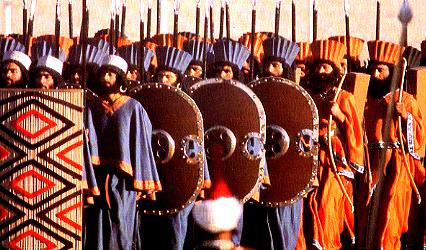The first Persian Empire (550 B.C.–330 B.C.), called the Achaemenid Empire, is known for having an elite force of soldiers. Named the “Immortals” by Herodotus, this army consisted of a heavy infantry of 10,000 men, that never reduced in number or strength. The Immortals played an important role in Persian history, acting as both the Imperial Guard and the standing army during the expansion of the Persian Empire and the Greco-Persian Wars.
The Immortals were called such because of the way in which the army was formed. When a member of the 10,000-strong force was killed or wounded, he was immediately replaced by someone else. This allowed for the infantry to remain cohesive and consistent in numbers, no matter what happened. Thus, from an outsider’s perspective, it would appear that each member of the infantry was “immortal,” and a member’s replacement may have represented a resurrection of sorts.




